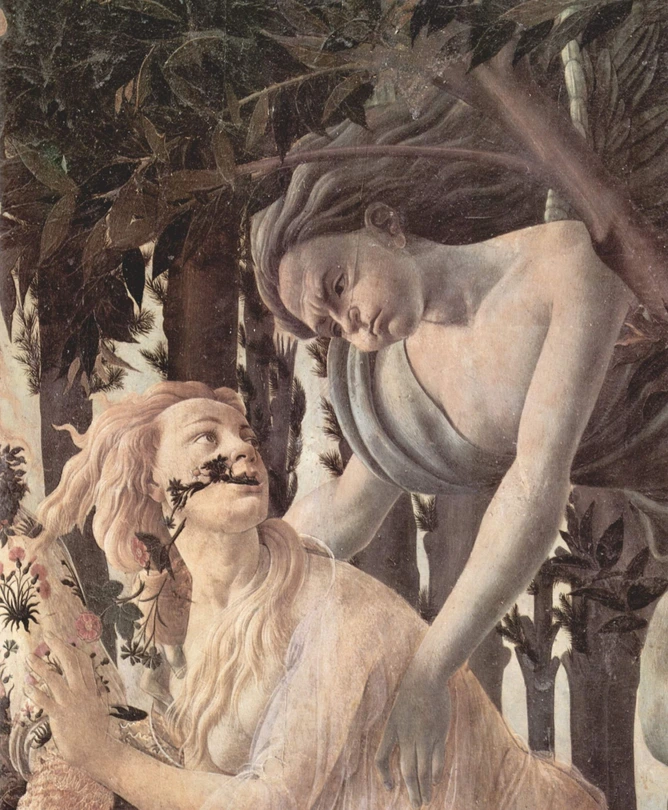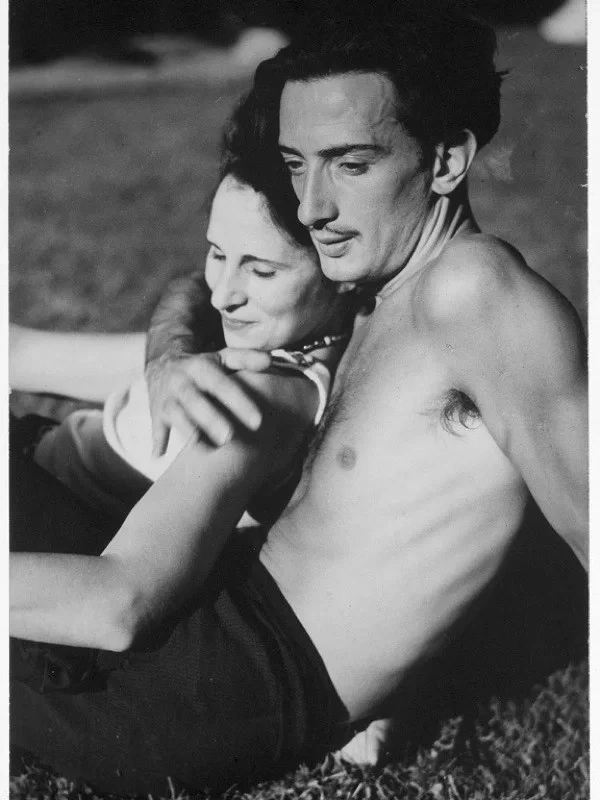Blog
Great muses of artists

SHARE THE ARTICLE


Sandro Botticelli and Simonetta Vespucci
I’ve traveled extensively and witnessed a great deal. My primary fascinatio
This is the story of the platonic love of Sandro Botticelli for his muse, the beautiful Simonetta Vespucci, who inspired a huge number of artists with her beauty for many decades to come and even after her death. The beautiful Florentine woman did not notice the modest artist and was not even aware that she was to him the ideal of beauty. Simonetta was married to Marco Vespucci, who was related to the famous Florentine navigator Amerigo Vespucci. She was considered the first beauty of Florence.
She became a symbol of Florence and, one might even say, a symbol of the Renaissance. The best painters depicted her on their canvases and poets enlightened their poems to her. And even her husband’s close associate Giuliano de Medici, who was co-ruler of Florence, was captivated by her beauty. Many art scholars believe that Simonetta was even his secret lover.
She did not live long, only 23 years, and has kept her youthful image for centuries. One version says she died of consumption, another says she was poisoned. Two years after her death, Giuliano de Medici was murdered by conspirators. The death of the young lovers is shrouded in a mystical halo, for he was murdered on the same day two years after her death.
Botticelli grieved for the beautiful Simonetta and continued to recreate her image in his paintings. His most famous work, “The Birth of Venus”, was completed nine years after Simonetta’s death. It is believed that from the moment they met, Simonetta appears in all of his paintings as a beautiful lady. This is particularly evident in the iconic painting “Primavera”. After the deaths of Simonetta Vispucci and Giuliano de’ Medici, the era in Florence called the Golden Age came to an end and the Florentine Renaissance began to decline.
n lies in the human being and their social surroundings. That’s why I find myself traveling frequently and constantly shifting my place of residence.
The creative process always commences within my mind. Often, I sketch out my ideas right in my head as I navigate through my environment. These mental sketches sometimes take on an abstract form and at other times, they become more figurative.
My art is essentially the expression of my feelings and thoughts. As a result, many of my artworks come into existence intuitively and spontaneously – straight from my gut. The human being is often the central subject in my art.



The Birth of Venus
Francisco Goya and unlucky 13th Duchess of Alba
Francisco Goya and Maria Teresa, as known as the 13th Duchess of Alba, have been called the most temperamental couple in Spain. Their hot southern blood made them quarrel, break up, reconcile and then return to their passion. The famous artist and the beautiful aristocrat was not afraid of the difference in background and social status. Nothing could part the painter from his muse except her strange death.
Apart from painting, the painter had another passion: women. Witnesses said that when the painter liked a lady, he would pursue her at any cost. Sometimes Goya painted a portrait of a girl not for money, but for kisses. Even when married, the artist led a riotous lifestyle.
Francisco Goya was about forty years old when one of the balls he met a 20-year-old Duchess of Alba. Every Spaniard dreamed of her. According to contemporaries, when she walked down the street everyone looked out of the windows, even children dropped their games just to look at her. And Francisco Goya was also fascinated by her beauty. They had a secret liaison, but after her husband died, Goya moved into her mansion and spent a year “consoling” the widow until she found herself a wealthy lover. Goya was terribly angry and continued to paint her portraits anyway.
A couple of years later, when Alba became bored with her admirer and Goya became much richer, she returned to him. And they were together until death dove them apart. And they were together until death parted them. Some believe she poisoned herself, as she always wanted to die young so that old age would not “touch” her beautiful face and body. Others believe she was poisoned by those who envied her.
Although the Francisco Goya had affairs after her death, he always considered the Duchess of Alba to be his favourite muse.
Current events such as the worldwide oppression of individuals, especially women in countries like Iran, are pivotal subjects that deeply resonate with me as a person and an individual.
During my stay in London and upon returning to Germany, I embarked on a series of portraits featuring women who exude both strength and resilience while simultaneously contending with political and societal subjugation. I’ve wholeheartedly embraced this theme in a street art style.The pieces present themselves as if they’ve been painted over or blurred on the wall multiple times.
The painting backgrounds are adorned with torn newspaper, posters, and graffiti, invoking a potent resemblance to street art found right on the bustling streets themselves.

The White Duchess (1795)

The Black Duchess (1797)

The Nude Maja

The Nude Maja
Caravaggio and Lena
Muses are different and do not always have to be ladies of nobility, as the story of the great painter Caravaggio and his lover Maddalena Antognetti or Lena shows us.
We know almost nothing about his life, but much is known from court documents. The artist had a violent temper. And his lover was a girl of ‘easy virtue’, but Caravaggio didn’t care for the opinion of others. He was madly in love with Lena and painted many portraits of her.
One of his most scandalous works was a portrait of Lena in the image of the Madonna, which caused great anger among the public. Firstly, they did not like who the portrait was painted from; Lena’s reputation was known throughout Rome. Secondly, the saints had never before been portrayed so realistically. Church representatives considered it indecent to depict a naked and uncircumcised Christ much older than is customary. In addition, the censors found the naked bodice of Our Lady to be vulgar.
One day Caravaggio’s detractors beat Helena and she lost her baby while pregnant. Enraged, Caravaggio looked for a way to vent his anger and killed his old enemy in a street fight. He later fled Rome and on the run learned of his muse’s death.

Madonna and Child with St. Anne

Oskar Kokoschka and Alma Mahler
This is a rather bizarre love story between an artist and his muse. The Austrian painter Kokoschka had a stormy love affair with a famous Viennese beauty called Alma Mahler, widow of the famous composer and conductor Gustav Mahler. Their romance did not last. Alma became frightened of the artist’s oddities, of which he had plenty, and parted ways with him.

The Bride of the Wind or The Tempest

Double Portrait of Kokoschka and Alma Mahler
Unable to shake off the painful memories of her, in 1919 Kakoska commissioned a life-size female doll from the image of his former lover.
He not only went to public places with his ‘Alma doll’, but also slept with her and bought her the best dresses and expensive French lingerie. Of course, this flamboyant behaviour was a way of boosting his popularity and the price of his paintings. When he had enough of the doll and decided to get rid of it, he also put on a show. Together with his friends, they dressed her up and cut off her head.
Oskar Kokoschka not only went to public places with a life-size copy of Alma, but he also slept with her and bought her the best dresses and expensive French lingerie. Of course, by behaving in such a flamboyant manner, the artist was increasing his popularity and the price of his paintings. When he had enough of the doll and decided to get rid of it, he also put on a show. Together with his friends, they dressed her up and cut off her head.

Kokoschka’s Alma doll


Self-Portrait with a Doll


Salvador Dali and Gala
And here we get to the most eccentric couple of all, Salvador Dali and Gala – his muse and wife in one, an extraordinary Russian woman without whom Dali would never have become a modern art icon.
They met when he was 25 and she was 35. Their relationship was everything: love, hate, scandals, break-ups, but no matter what happened, Dali loved her madly. Elena Ivanovna Diakonova, or Gala, was a mysterious and highly intuitive woman, which was able to recognise artistic and creative genius when she saw it, and had relations with a number of intellectuals and artists.
Gala was very fond of men and money, and many people judged her for that. But whatever the case, it was she who ran around Paris with Dali’s paintings and sold them, convincing everyone that they would increase in value in a year. She also bought the best brushes and paints so that Dali would work and not think about anything else. Gala surrounded him with incredible care. She relieved him of his obligation to think about how to sell his paintings, what to eat and fully provided him with money. In his creative journey she was not only his muse, but practically his art agent and the person who made his life comfortable.

Galatea of the Spheres,1952

The Madonna of Port Lligat, 1949

Portrait of Gala with Two Chops Balanced on Her Shoulder, 1934
COMMENT
LEAVE A COMMENT
Actually, this article could
be in your email
Featured materials from FOXYLAB MAGAZINE
are available in our newsletters.
Subscribe and get a dose of inspiration!
SHARE THE ARTICLE

more articles
International fashion icon and symbol of Parisian style, Ines de la Fressange is one of the most famous women in France.
A whole world on the tip of a pencil. The story of an artist who proved that true art has no limits and that it is never too late to start all over again.
Vitalie Burcovschi’s digital art captivates the soul and transports the viewer to a realm of boundless imagination and emotion. In his art, he creates…
Anastasia Pilepchuk is a Berlin-based artist with Buryat roots. She creates masks and face jewellery inspired by the nature and the culture of her beautiful region.

want to share your story
with the world?
We're open to collaborating with creative and talented individuals like you. Leave us your email below, and let's connect for interviews, articles, and more.
don’t miss!
New drop
foxylab ny x Edward Acosta
New drop FXLB x Edward Acosta
A thin edge of seduction and the consumerism fetish is thoroughly blurred in Acosta’s art in the use of both light, and dark tones. Bold lines serve as a fashionable juxtaposition of a peaceful dream-like state and a vivid color, representing action and presence in the moment.
International fashion icon and symbol of Parisian style, Ines de la Fressange is one of the most famous women in France.
A whole world on the tip of a pencil. The story of an artist who proved that true art has no limits and that it is never too late to start all over again.
Vitalie Burcovschi’s digital art captivates the soul and transports the viewer to a realm of boundless imagination and emotion. In his art, he creates…
Anastasia Pilepchuk is a Berlin-based artist with Buryat roots. She creates masks and face jewellery inspired by the nature and the culture of her beautiful region.















